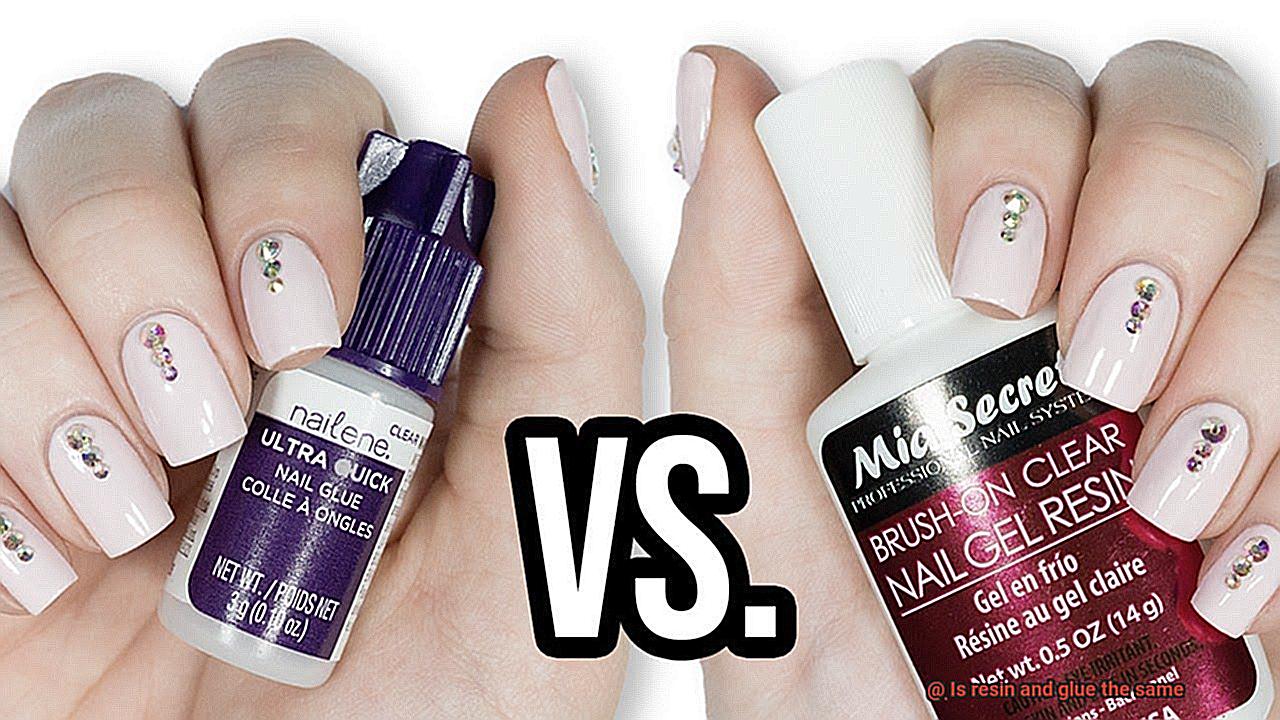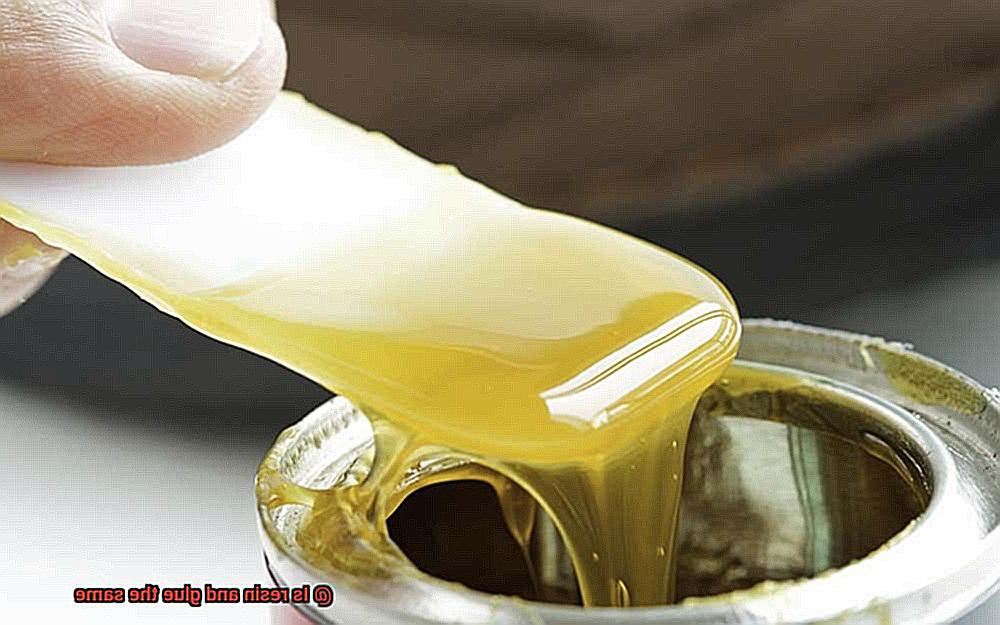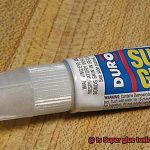Ever wondered if resin and glue are cut from the same cloth? Well, my friend, prepare to have your mind blown. While these two sticky substances may seem like twinsies on the surface, they’re actually as different as night and day. And today, I’m here to spill all the tea on their unique quirks and uses.
Resin and glue might both stick things together, but that’s where the similarities end. These sneaky little devils have distinct chemical makeups that give them their own special powers. And trust me, knowing these secrets will save you from adhesive disasters in the future.
So buckle up, my curious comrades. We’re about to embark on a journey through the enchanting realm of resin and glue. Get ready to uncover their hidden talents and discover which one is destined for your project’s success. Let’s dive right in.
What is Resin?
Contents
Resin is a complex mixture of organic compounds that can be either natural or synthetic. It undergoes polymerization, a chemical reaction that results in a solid, durable material. Resin can be found in various forms such as liquids, semi-liquids, or solids, depending on its intended use.
One of the main characteristics of resin is its ability to harden and solidify through a curing process. This process can be triggered by factors such as heat, light, or other catalysts, depending on the specific type of resin used. Once cured, resin forms a solid and rigid material that is known for its strength and durability.
Resin has a wide range of applications due to its unique properties. It is commonly used as an adhesive or bonding agent in industries such as construction, woodworking, and crafts. Resin-based adhesives provide strong and durable bonds between different materials.
Resin is also utilized in the manufacturing of composite materials. By combining resin with reinforcing materials such as fiberglass or carbon fiber, composite materials are created. These materials are lightweight yet strong, making them suitable for applications in aerospace, automotive, and marine industries.
Furthermore, resin is often used for its aesthetic qualities. It can be easily pigmented or colored, allowing it to be used for artistic purposes such as painting and sculpture. Resin art has gained popularity in recent years, with artists creating stunning and unique pieces using resin as their primary medium.
In addition to its adhesive and aesthetic properties, resin is resistant to moisture, chemicals, and heat. This makes it suitable for outdoor applications where surfaces need protection from harsh environments.
What is Glue?
Glue is a remarkable substance that has the power to bring materials together in a strong and lasting bond. It comes in different forms, such as liquid, gel, or solid, each with its own unique properties and applications.
At the heart of glue is the adhesive, the secret ingredient that makes it all stick together. Adhesives can be derived from natural sources like animal hides or plant extracts, or they can be created using synthetic compounds such as polymers or resins. These adhesives work their magic by forming chemical bonds with the surfaces they come into contact with, creating a tight grip that holds everything in place.
There are various types of glue available, each tailored to specific materials and purposes. Wood glue, for example, is specially formulated to bond wood pieces together, while fabric glue is designed for adhering fabrics. There are also specialized glues for plastic, metal, ceramics, and other materials. These specialized formulations have specific characteristics that make them perfect for their intended uses.
When it comes to applying glue, there are different methods depending on its form and purpose. Liquid glues are often spread onto one or both surfaces before pressing them together. Gel glues offer more precise application and are ideal for vertical surfaces or situations where precise positioning is required. Solid glues, like glue sticks or hot glue, need heat to melt and become adhesive.

Modern glue formulations often include additives to enhance their properties. Some glues have waterproof or weather-resistant properties, making them suitable for outdoor applications. Others have quick-drying characteristics or increased flexibility to accommodate movement.
Differences between Resin and Glue
Resin and glue are two adhesive substances that serve the purpose of bonding materials together. However, they possess distinct differences in terms of composition, properties, applications, transparency, and safety.
In terms of composition, glue is typically made from natural or synthetic polymers such as animal collagen or synthetic resins like polyvinyl acetate (PVA). On the other hand, resin is derived from plant or animal sources, such as tree sap or insect secretions. Resin undergoes a curing process to transform from a liquid into a solid.
The properties of glue and resin also differ significantly. Glue tends to have a lower viscosity and is usually water-based. This makes it easier to apply and clean up. It dries by evaporation or moisture absorption, forming a bond between the materials being glued. In contrast, resin has a higher viscosity and requires a hardener or catalyst to cure. Once cured, resin forms a robust and durable bond that can withstand moisture, heat, and chemicals.
The applications of glue and resin also vary greatly. Glue is commonly used for lightweight applications and temporary bonds that may need to be undone. It is suitable for bonding materials like paper, wood, fabric, and other porous surfaces. On the other hand, resin is often employed in heavy-duty applications where a strong and permanent bond is required. It finds extensive use in industries such as construction, automotive, aerospace, and jewelry making.
When it comes to transparency, glue can come in various colors and opacities depending on its composition. Some glues dry clear while others may have a slight color tint. In contrast, resin can be transparent or translucent, making it ideal for applications such as jewelry making or encapsulating objects for display.
Lastly, both glue and resin can contain chemicals that may be harmful if not used properly. It is crucial to follow safety guidelines and ensure proper ventilation when working with these substances. Some types of glue may also cause skin irritation or allergies in sensitive individuals. Resin, in particular, requires careful handling as it can emit fumes during the curing process.
Advantages of Using Resin
Resin is a remarkably versatile material with numerous advantages over other adhesive options. Craftsmen, artists, and DIY enthusiasts gravitate towards resin due to its flexibility for a wide range of applications. Whether it’s creating jewelry, decorative items, coatings for tables and countertops, or casting sculptures and replicas, resin’s ability to be molded and shaped into various forms makes it an ideal choice.
Another significant advantage of using resin is its durability. Once cured, resin becomes hard and rigid, enabling it to withstand wear and tear. This quality makes it perfect for creating items that need to endure daily use or external elements. Resin countertops, for instance, are resistant to scratches, stains, and heat, making them a practical choice for kitchens and bathrooms.
Transparency is yet another advantage of resin. Its excellent transparency properties allow light to pass through easily, making it ideal for creating translucent or transparent objects like jewelry or decorative items. Moreover, resin can be mixed with pigments or dyes to produce vibrant and colorful designs that catch the eye.
Resin’s adhesive properties are also highly advantageous. It effectively bonds different materials such as wood, metal, plastic, and glass, making it a versatile option for various applications. Whether repairing broken items or creating strong bonds in construction projects, resin is a reliable adhesive choice.
Additionally, resin’s resistance to chemicals makes it suitable for applications where exposure to harsh substances is expected. Epoxy resin, for example, is often used in laboratories as a coating material for benches or as a protective layer on floors to withstand chemical spills.
Resin’s weather resistance further adds to its appeal. Many types of resin are highly resistant to weather conditions such as UV radiation and moisture. This makes them suitable for outdoor applications like garden sculptures or coatings for outdoor furniture. Resin maintains its color and structural integrity even when exposed to harsh sunlight or rain.
Working with resin is generally easy compared to other materials like metal or wood. It can be poured into molds, allowing for precise and detailed designs. Moreover, resin can be sanded, drilled, and polished, giving artisans the ability to refine their creations further.
In recent years, eco-friendly resins have gained popularity. These resins, derived from renewable sources like soybeans or cornstarch, offer the same advantages as traditional resins while being more environmentally friendly. This reduces our reliance on petroleum-based products and contributes to a greener future.

Advantages of Using Glue
Glue is a versatile adhesive that offers numerous advantages for various applications. Whether you’re a DIY enthusiast or a professional, glue can be an essential tool in your toolkit. Here are some key advantages of using glue:
- Versatility: Glue can be used on a wide range of surfaces, including paper, wood, fabric, plastic, and more. This makes it suitable for a variety of projects, from crafting to household repairs. With glue, you don’t need to worry about finding different adhesives for different materials.
- Ease of Use: Using glue is simple and doesn’t require any specialized skills or tools. It can be easily applied by anyone, making it accessible for both professionals and beginners.
- Quick and Efficient: Glue offers a quick and efficient way to bond materials together. Most glues have a fast curing time, allowing for efficient bonding without the need for extended drying periods or heat application.
- Cost-Effective: Glue is generally an affordable option compared to other bonding methods. It is readily available in various price ranges, depending on the type and brand. Additionally, a small amount of glue often goes a long way, making it a cost-effective choice for many projects.
- Wide Range of Options: Glue comes in different types and formulations, each designed for specific purposes. Whether you need a strong adhesive for heavy-duty applications or a gentle adhesive for delicate materials, there is a glue available to meet your specific needs.
- Non-Destructive: Glue is non-destructive in nature and does not alter the appearance or integrity of the surfaces it bonds. This makes it particularly suitable for applications where aesthetics and preservation are important, such as in art and conservation work.
- Reversible: Certain types of glues offer the advantage of being reversible. If a mistake is made or the bond needs to be undone, these glues can be easily dissolved or softened, allowing for repositioning or complete removal. This flexibility makes glue a convenient choice for projects that require adjustments or modifications.
- Variety of Formulations: Glue is available in various formulations, each tailored to specific purposes and materials. From glues designed for porous surfaces to heat-resistant or waterproof glues, there is a glue available for every project requirement.

Types of Resins and Glues Available on the Market
Resins and glues are essential adhesive materials used for bonding and joining different materials together. While they serve the same purpose, there are key differences between the two. Resin is a solid or semi-solid substance derived from plants, animals, or synthetic sources, while glue is a specific type of adhesive made by combining resins with other ingredients. In this essay, we will explore the various types of resins and glues available on the market, their uses, and how they differ from one another.
Epoxy resin is one of the most popular types of resins used for various purposes. It consists of a resin and a hardener that create a strong and durable adhesive when mixed together. Epoxy resin is known for its high strength, excellent adhesion, and resistance to chemicals and moisture. It is commonly used in construction, art, and manufacturing industries.
Polyurethane glue is another versatile adhesive that can bond a wide range of materials such as wood, metal, plastic, and glass. This glue expands as it cures, filling gaps and creating a strong bond. It is also resistant to water and can be used for both indoor and outdoor applications.
Cyanoacrylate glue, also known as super glue, is a fast-setting adhesive that bonds quickly and securely. It is ideal for small repairs and bonding materials like metal, plastic, rubber, and ceramics. Super glue forms a strong bond almost instantly and is resistant to water and most chemicals.
Wood glue, also known as carpenter’s glue or PVA glue, is specifically designed for bonding wood surfaces. It has a strong initial tack and dries clear, making it ideal for woodworking projects. Wood glue forms a strong bond that can withstand stress and impact.
Silicone adhesive is known for its flexibility and resistance to high temperatures. It is commonly used in automotive and electronic applications where heat resistance is required. Silicone adhesive can bond materials such as metal, glass, ceramics, and rubber.
In addition to these types of glues and resins, there are also specialized adhesives available on the market. UV-curing adhesives cure when exposed to ultraviolet light and are often used in electronics and medical devices. Structural adhesives are designed for bonding load-bearing structures and provide high strength and durability.
When selecting a resin or glue, it is essential to consider the specific application, materials being bonded, and desired properties such as strength, flexibility, and resistance to environmental factors. It is crucial to read product labels and follow manufacturer’s instructions to achieve optimal results.
Applications of Resin and Glue
Resin and glue are versatile adhesive substances that have a wide range of applications. Resin, whether naturally produced or synthetically created, finds its place in various industries such as construction, automotive, and art. In the manufacturing of composite materials, resin is combined with materials like fiberglass or carbon fiber to create lightweight yet strong structures. This quality makes it perfect for the aerospace industry, where weight reduction is crucial for flight efficiency.
Woodworking is another field where resin shines. It can be used as a wood adhesive, providing a durable and sturdy bond for projects that require structural integrity, like furniture making or cabinetry. Additionally, resin can be used as a protective coating for wooden surfaces, leaving them with a glossy and smooth finish that enhances their overall appearance.
In the art world, resin is a go-to material for creating sculptures and artwork. Its excellent clarity allows artists to preserve the vibrant colors and intricate details of their creations. Whether poured into molds or applied directly onto surfaces, resin adds uniqueness and vibrancy to artistic pieces.
On the other hand, glue is a generic term encompassing various adhesive substances made from different materials such as animal hide or synthetic compounds like polyvinyl acetate (PVA). Its applications are diverse and depend on the specific type of glue being used.
In crafting and DIY projects, glue serves as a trusty companion. It can be used to stick lightweight materials together, such as paper or fabric. Glue is essential for activities like scrapbooking, card-making, or creating decorations. Its temporary bonds allow for easy adjustments or disassembly if needed.
The construction industry heavily relies on glue for bonding materials like wood, metal, or plastic. With specialized formulas tailored to specific materials, glue ensures strong and durable bonds. Construction adhesives excel in tasks such as installing flooring or tiles, providing secure bonds that withstand heavy foot traffic.
Automotive-grade adhesives play a vital role in the automotive industry. They are used for attaching trim pieces, repairing upholstery, or bonding rubber seals. Designed to endure extreme temperatures and vibrations, these adhesives guarantee reliable bonds that can withstand the harsh conditions vehicles face.
kTxr4Z4mwj0″ >
Conclusion
In conclusion, resin and glue may both bond materials together, but they are not one and the same. Resin is a complex concoction of organic compounds that can be natural or synthetic. Through a curing process, it transforms into a solid and robust material. Its reputation for strength, durability, transparency, and resistance to moisture, chemicals, and heat makes it a favorite in construction, woodworking, art, and manufacturing.
On the flip side, glue is an adhesive crafted from diverse materials like animal hides or synthetic compounds such as polymers or resins. It comes in various forms and formulations tailored to specific purposes and materials. With its versatility, ease of use, quick bonding times, cost-effectiveness, and wide range of options at your disposal. Glue finds itself commonly employed in crafting, woodworking, construction, automotive applications – the list goes on.
When faced with the decision between resin and glue for your project’s needs – take into account specific requirements for the application at hand. Consider factors like desired properties (strength or flexibility), materials being bonded together – all crucial elements for your project’s success.
To summarize: resin and glue are not interchangeable; they possess unique compositions, properties,and advantages. Understanding these distinctions empowers you to make informed decisions when selecting the appropriate adhesive for your projects.






